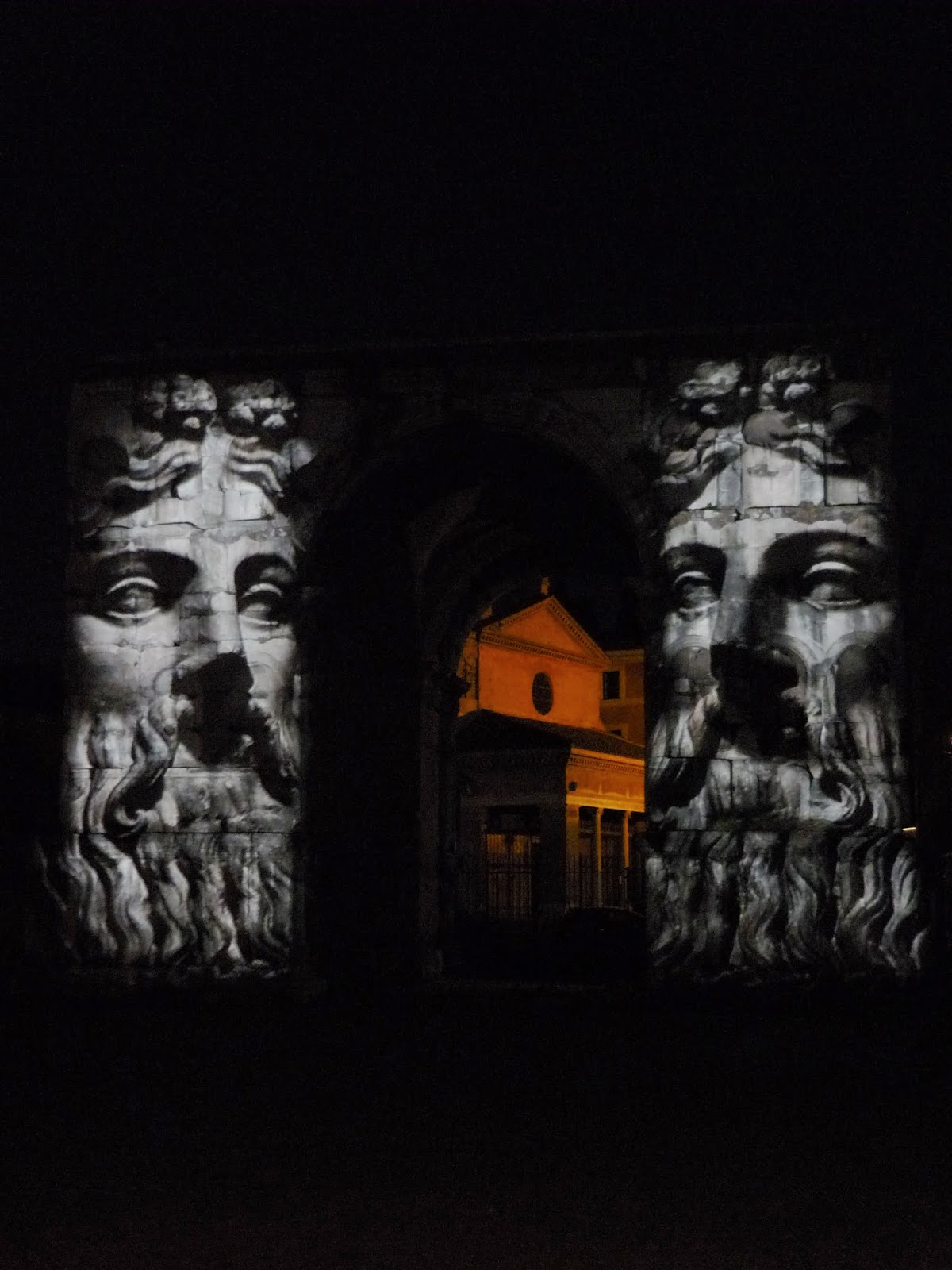According to the Renaissance tradition, the arch was built in the 4th century AD to celebrate Janus; this is a false belief, because the monument was one of the entrances to the Forum Boarium.
Indeed, Janus was regarded as the watchman of every place with an entrance and an exit (such as the doors); therefore the Latin word “Ianus” was also used to indicate a “door”, or a “covered walkway”.
In the Middle Ages, the powerful family of Frangipane converted the arch into a fortress, which was destroyed in 1830. The top was also torn down because it was erroneously believed to not belong to the Roman construction.
Today the arch, covered with white marble and supported by four pillars, is unadorned. Thanks to some studies on the monument, we know that it was originally adorned with friezes and four sculptures on the top: the Goddess Roma, Juno, Minerva and Cerere.
Today is the last day to admire the visual installation, do not miss the chance!
Exhibition hours: from 6pm to 12pm
 |
| "Populus" |
 |
| "Populus" |
 |
| "Populus" |
 |
| "Populus" |
 |
| Arch of Janus |




